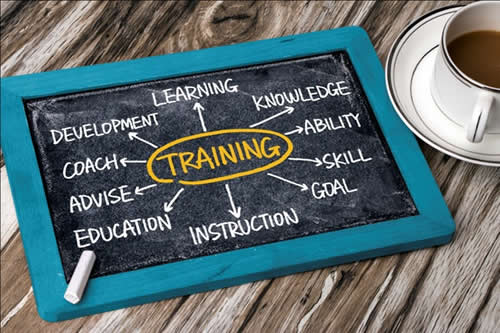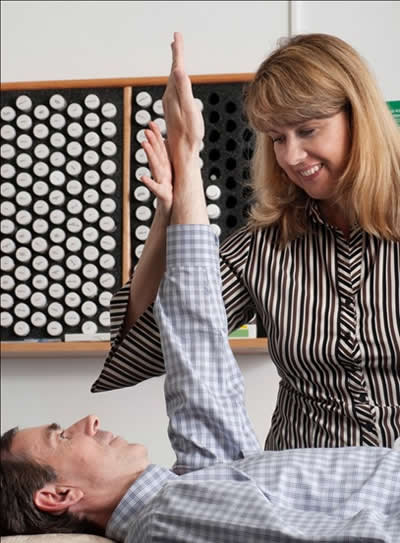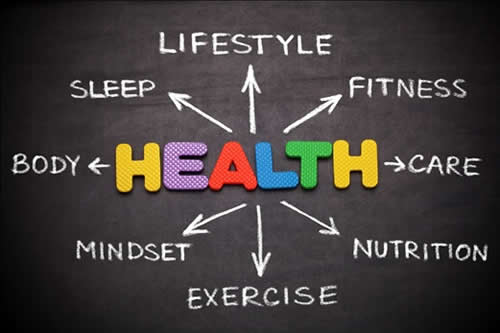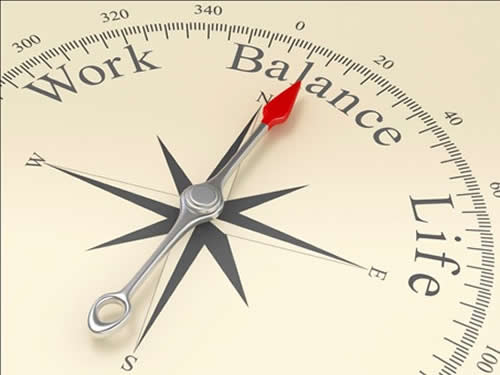Positive Health Online
Your Country

CAM Practitioners – A Modern Insight into Today’s Practices
by Yvonne McLaughlin(more info)
listed in clinical practice, originally published in issue 242 - November 2017
Complementary and alternative medicine (CAM) is the popular term for health and wellness therapies that have typically not been part of conventional Western medicine. It theorizes that the body is treated as a whole, considering emotional, nutritional and structural health, in order to rationalize why the symptom presents itself in the first place, rather than just treating the symptom. CAM offers the body the push it needs to activate its self-healing mechanisms. Because of this, it works on a phenomenal range of illnesses and symptoms of both the mind and body. It is improbable that you will get a quick fix; that’s not promised, but integrative medicine is emerging and results are promising. Kinesiology, homeopathy, acupuncture and nutritional therapy are just a few of the increasingly popular CAM therapies available today.

Photo credit: ©iStock.com/ cacaroot
A successful CAM Practitioner or Therapist needs to have a particular outlook on life. As caregivers, they are efficient, capable and skilled in a particular therapy or healthcare modality. A practitioner’s primary concern is to provide a system of healthcare that addresses the whole person yet also works towards the prevention of illness. Training to become a healthcare professional is a journey. What you will learn about yourself in this time will be invaluable and will help you become a successful practitioner. Personal ups and downs that don’t hurt us make us stronger and empathetic, so don’t look at these as weaknesses. Good practitioners have rewarding and fulfilling careers, so it is important to use your life skills to get the best from yourself. Intuition and perception are two important characteristics. We all have these traits and we all have the ability to nurture and expand these qualities.
The CAM sector continues to grow and develop. According to a recent study, the prevalence rate for visits to CAM practitioners increased from 20% in 1998 to 27% in 2002.[1] Researchers found Irish CAM users were ‘more likely to be well-educated, affluent, middle-aged and employed’. It also noted that Irish people suffering from pain, anxiety and depression were more likely to make use of CAM modalities.[1]
ECHAMP, the European Coalition on Homeopathic & Anthroposophical Medicinal Products, have reported that the EU market for natural medicines is growing by 6.5% a year.[2] When I first set up my clinical practice, the majority of my clients were middle-aged females and I had few male clients. Over the last number of years, I have seen a dramatic increase in both men and children attending my clinic.
More often than not, CAM therapies are only considered an option when all other routes have been exhausted. While in fact it makes much more sense to consider CAM in the early stage of symptoms, or as a preventative measure. Firstly, take for example, everyday routine issues like colds, flus, sinus infections, allergies and bowel complaints. More often than not, medication is the primary medical recommendation. Whereas, if we as CAM practitioners were to analyse nutritional status and lifestyle, we would be able to balance most if not all of these symptoms. Secondly, take reoccurring conditions such as menopausal symptoms, hormonal imbalances, digestive issues, infections and parasites; we would investigate the underlying issue - look at the root of the problem and balance from there, rather than mask what the body communicates.

Photo credit: ©iStock.com/ leezsnow
Kinesiology
Kinesiology (pronounced kin-easy-ology) was first developed by Dr George Goodheart and fellow chiropractors in the USA in the 1960s. Kinesiology is a holistic approach to balancing a person’s energy system. Blocks and imbalances that impair physical, emotional, nutritional and electrical levels are reflected in the muscles’ response.
Kinesiology works at addressing the individual as a whole, rather than focusing on one specific symptom. It works on a body priority basis to get to the root of a symptom through the gentle and non-invasive evaluation of muscles in the body. These muscles provide the kinesiologist with feedback, detecting imbalances in the mind and the body’s structural, electrical or nutritional systems. Kinesiology then works to balance these systems with a combination of stress release, neurolymphatic massage, personalized nutrition, diet recommendations, supplements and natural remedies. Kinesiology is a fantastic detective tool in clinic, and is often used by therapists in combination with other therapies.
Homeopathy
Homeopathy was founded by Samuel Hahnemann in the 1790s. It is based on the principle similia similibus curentur meaning let likes be cured by likes. Hahnemann believed that a substance that caused the symptoms of disease in a healthy person would cure similar symptoms in sick people. Homeopathic remedies are recommended by CAM providers that best address what is happening within the client’s environment. Homeopaths choose the best suited remedy based on the following factors; the totality of symptoms, individual’s personality, family and life history, and physical and psychological states.
Homotoxicology
Homotoxicology is an area of homeopathy that was developed by a German doctor, Hans Heinrich Reckeweg, during the 1940s. The objective of homotoxicology is the detoxification of toxins and toxicants. In addition to active ingredients from the animal, vegetable and mineral world, homotoxicology will also utilise tissue and/or organ preparations of chemical, solvents, food or other substances to which the individual is sensitive or reactive. One example of a common toxicity issue noted in clinic is metal contamination; quite often seen in dentists, jewellers or even those with mercury dental fillings. Other toxicants include chlorine, organophosphates, pesticides, fertilisers, smoke, chemicals, medications, food additives, colourings and preservatives, etc.
Tissue Salts
Tissue salts, also referred to as mineral salts, were developed by Dr Wilheim Schüssler in the 1870s. His cell salt therapy taught us that the tissue or cells of the body can be broken down chemically into twelve inorganic mineral salts and that disturbance in the levels of these salts can cause disease. These disturbances could be caused by malnutrition, pregnancy or post-illness. Dr Schüssler believed that when administered homeopathically, the body’s cells assimilated the minerals much more successfully. This enhanced the health-supporting effects of the essential minerals. He also believed that the body needed only very small amounts of the tissue salts to rebalance the system. Tissue salts regenerate on a cellular level, as homeopathy does, but also like a nutritional supplement.
Nutritional Therapy and Lifestyle Changes
Diet and lifestyle recommendations are crucial no matter what the health issue, whether it is physical or psychological. Nutritional therapy and a healthy lifestyle form the basis for any healthy being. Many of today’s common health conditions, including high cholesterol, Type 2 diabetes, obesity, cardiovascular disease, anaemia, hypertension and increasingly prevalent cancers, are often induced or exasperated by poor diet and lifestyle choices. Clients with the above-mentioned conditions will notice improvements with CAM therapies, but the benefits will be much greater and easier maintained if the client follows a wholesome eating programme and an active and healthy lifestyle. Many of the aforementioned health conditions are as a result of excess weight. The World Health Organisation (WHO), estimates nearly all Irish adults will be overweight within 15 years.[3] Given current trends, 91% of Irish men will likely be overweight by 2030, with nearly half obese. That has increased from 74% overweight and 24% obese since 2010, making Ireland one of Europe’s fattest nations.[3]
Healthy lifestyle behaviours which include regular exercise, weight control, healthy nutrition and complementary practices have the potential to greatly reduce cancer-treatment-associated morbidity and mortality in cancer survivors.[4] Holistic principles can also enhance quality of life.[4] Kinesiologists and homeopaths will generally combine a treatment plan individualized to each client; within this they will include nutrition and lifestyle recommendations if needed.

Photo credit: ©iStock.com/pepifoto
Emotional Wellbeing
Emotional wellbeing is not the absence of emotions, but rather the ability to understand the value of feelings, attitudes or temperaments and how to best utilize these to move your life forward in positive directions. Unfortunately, almost everybody grapples with their psychological state at some stage of life. Emotions can be at the root of anything and everything. Powerful emotions such as anger, fear, grief, panic or anxiety create an electrical imbalance in the body, causing lesions along your neural pathways. This disturbs the natural flow of your energy. Therefore, suppressing emotions results in decreased vigour or vitality which is needed for important functions. Eventually, lowered or weakened vitality results in illness. Many individuals do not know where to start in order to look after themselves emotionally. As practitioners, it is our job to support this area, to stimulate emotional release and healing as emotional stability is paramount to a healthy being.
Emotional wellbeing can be described as a positive sense of wellbeing which enables us to function and meet the demands of everyday life. Yet so many emotions get in our way each and every day. Just think about how many positive and negative emotions you feel on a typical day? People in good mental health have the ability to recover well from illness or change whereas people who experience chronic emotional distress will find recovery, even on a physical level, much more challenging. Each emotion we feel, be it negative or positive, creates some sort of reaction in our body, for better or worse. The better able we are to work through our emotions, the better able we are to lead a balanced, healthy life. Toxic, negative emotions and limiting beliefs contribute to the destabilising of the body’s internal environment, with certain conditions indicated from poor emotional responses and self-criticism. Louise Hay, author of You Can Heal Your Life, suggests that fear and anger are two mental patterns which can interfere with body balance.[5]
From my practice experience, if you have an emotionally-balanced client, they will feel more enlivened and revitalized than they have felt in quite a long time. This improvement will also contribute to nutritional and physical wellbeing. However, emotional balance takes time to achieve and is dependent on a thorough and experienced practitioner and a dedicated client. To me, it is most important every time.
The Underlying Issue
In clinic, it is of extreme importance that we look at the client holistically, looking at the whole body and not just the symptom presented. It is all about retracing where, when and how the symptom began. This sometimes proves challenging, depending on how long it has been since the symptom presented itself and depending on how open or willing a client is to making changes. This is where kinesiology, as a testing therapy, is most valuable, especially if the client has difficulty opening up emotionally.
Understanding a client’s background is key to progressing a case. Quite often we can attribute symptoms to their disposition, physical state, diet, lifestyle, occupation and relationships. Ask questions around these areas, and especially in relation to unresolved emotional issues.
It is important to address the symptom that the client presents with so that they see benefit in the area they requested. Talk through their goals and find out what they expect from the session. With that in mind, set out the best treatment plan for the individual. Quite often for us as practitioners, it is activating the healing system that gets the results. Yet this may take a little time, and if clients cannot recognise some form of recovery, they start to question – is this working? You can work on both areas simultaneously. Firstly, address the symptom, but more importantly address the root cause. Invariably, detoxification will be required together with organ healing and tissue repair. You have then stimulated the healing process for your client, provided you have outlined a full treatment plan with emotional support, nutrition, diet and lifestyle recommendations. It is then the responsibility of your client to follow your professional advice and return for a follow-up consultation. Results should be noted.
After-Care Service
Within the initial appointment, each practitioner should allow time to discuss the client’s personalised health plan, the importance of adhering to this and reassure any anxieties the client may have. As practitioners, we need to recognize that this is the client’s journey and that they need to take responsibility and appropriate action for their own health. Clients should also let their doctors know of any CAM therapies they are undergoing. Doctors are aware of the increasing popularity of complementary healthcare and will appreciate hearing the client is taking positive steps to improve their own health. The importance of a follow-up appointment should be emphasized if required. It is then up to the client to make this their responsibility, not yours.
Boundaries
CAM practitioners need to be able to manage expectations, both theirs and that of the client. Boundaries can easily be ambiguous. It is important to set down good business practices from the onset so clients do not take advantage of you and your time. For a practitioner, as it is for any other professional, it is important to separate work from home. Examples of this would be to set working hours and adhere to them, leave your phone in the office and be able to say No. Clients will soon get used to the fact that you are only available during working hours. When real crises arise, you can deal with them in context. The majority of CAM practitioners are self-employed and so self-care is essential.
In clinic, it is not good practice to talk about yourself. Only talk about yourself when you feel your contribution will benefit your client. Clients do not need to know very much about you and in my opinion there is nothing worse than attending a therapist that talks continually about themselves.
Limitations
As I started out on my practice journey, a few things got in my way. Initially I found people questioning, maybe sceptical, but generally it was because they were not familiar with CAM therapies. Gradually people improved as they felt the benefits of their treatment. There is now a notable increase in available therapies/clinics and a remarkable increase in people having life-changing results from these practices. This in turn is generating a more positive outlook for the CAM community. Current clients feed our future clients and good word of mouth is the best advertisement.
One battle I tend to face now as a kinesiologist is the opinion that kinesiology is only food-related and that we will ‘put clients off loads of my favourite foods’. Some kinesiologists are very nutrition-based, but others are not. I believe, as a practitioner, that the emotional, nutritional and structural balances are all of equal importance and it is necessary to balance all three areas. Most of our food-related conditions derive from underlying issues, so we look for the root cause.
Commitment and Determination
A big question: why don’t all practitioners manage to succeed? How much do they want this, do they want it as a career or as a hobby? We have both types and both are important. Two key elements that helped me along the way were my family’s support and case histories. If I had not had such understanding from my family, there would have been more struggles along the way. I also found that putting sufficient time and effort into my case studies was key to making me a successful practitioner. This is where you learn.
Balancing clinical appointments with everything else that comes with being self-employed is challenging. Quite often, we don’t think ahead to these many tasks while we are training. There is much more to running a business than just seeing clients and all this needs to be considered from the beginning. Attending a Start Your Own Business workshop is recommended. This way, you are prepared and knowledgeable about the various jobs and responsibilities which need to be balanced alongside consultations.
Marketing is key. Work out your Unique Selling Point (USP). What have you got to offer that differs from another practitioner? Set yourself goals. As healthcare professionals, we are offering a better quality of life. What better quality do you offer? It’s important you put this across.
From a professional stand-point, run your clinic in the most accomplished and mature manner. Return calls in a timely fashion and take calls when appropriate. Phone calls should not be taken if in a consultation with another client.
Value Yourself
Setting appropriate fees is of utmost importance to running a successful business. Time is money and as practitioners, we shouldn’t give our time for free. It is important that when deciding on fees that we consider all areas, not just the time spent with a client. After consultations, we write up case notes and follow up with phone calls. Another consideration is bills, including rent, electricity, heating, insurance, study and continual professional development (CPD). After all, you don’t want to devalue yourself or devalue such an important practice.
Many practitioners struggle when it comes to charging friends and family. We also need to appreciate ourselves, our experience and our knowledge here and understand that many people don’t respect something that is free. It may work well to offer a reduced family rate. This implies that your time is valuable and they may be less likely to cancel at short notice if they see this as your business. There is also an element of appreciation for your profession - if your time is worth something and they can recognize the benefits of your consultations, the overall value of the appointment increases.
It is also important to recognize that not every client is suitable to every practitioner and vice versa. If you are not comfortable taking on a particular client for any reason, it would be more appropriate to refer to a professional colleague.
Confidentiality
Whilst treating clients, confidentiality is of extreme importance. This should be practised within all clinical appointments and phone calls. Building up a rapport with your client boosts their confidence and trust in you. Breaking confidentiality of just one client could have major repercussions for your clinic.

Photo credit: ©iStock.com/ onurdongel
Self-Care
CAM practitioners have a demanding job and so self-care is essential. It is something that cannot be learned in the classroom, and something we need to develop through personal experience. Many self-employed people burn out within the first few of years of business. Self-care will reduce the risk of fatigue or exhaustion and keep you balanced. This will differentiate from one professional to the next, but it is what makes a good practitioner great. We should experience CAM therapies ourselves to re-stabilise, de-stress and promote stamina. Quite often we are working with major emotional states in clinic so it is important that we don’t hold onto this as it will impact on us emotionally and physically. Empathy with your client is a valuable skill but so too is being able to protect yourself or clear any unwanted or detrimental energies during or following the appointment.
As practitioners we will find different areas difficult. Recognizing weak points and working on these is a learning curve. For some, this may be how they protect themselves on an emotional level when working with emotional clients, for others this may be saying ‘no’ when their diary is already overbooked. We do not want clients coming in to a chaotic environment with a stressed-out therapist. Performing to 100% capacity whilst in practice is important, but again it is equally important to leave it all at the clinic and ensure you have a good support network outside work, especially at the beginning of your career. Be kind to yourself. If you work alone, be careful and consider the above. Many therapists who work alone often find isolation becomes an issue.
We can all recognize a confident practitioner; one whose passion, experience and knowledge instils faith in their client. Considering the environment we live in, we all have stressful and difficult days. However, professionalism must be portrayed at all times. Consider your body language, listening skills and how you would like to be treated as a client. We can learn a lot from our clients and from other practitioners. A positive mental attitude portrayed in clinic will radiate with clients.
Appearance also represents conviction and professionalism. As the saying goes; practice what you preach. Clients will have much more confidence in a well-presented practitioner with a healthy appearance, normal weight and a positive outlook on life. It is not possible to be all things to all people, so focus on what you know and what you do best; discover your niche and put forward the best possible version of what you hope to achieve.
Training and CPD
Crucial to your career success is selection of the correct training college. Research their suitability; that they have experience and capabilities in clinical and technical aspects of the type of practice you have in mind. Check that it has the capacity to teach business and development skills. Does the provider have a credible track record with successful, full-time practitioners? Get names of former students and seek a consultation. Will the training meet your requirements for your own end-goals? Will they support and cater for your career ambitions? Consult with and get opinions from the best and most successful practitioners around before you sign on for any course.
Continued Professional Development (CPD) is described as a range of on-going activities which professionals undertake regularly to maintain and develop their skills. Such commitments secure and strengthen their capacity to continue practicing safely and effectively. CPD requirements vary depending on qualifications. It is time-consuming but hugely beneficial for clinical practice, for your clients and for your own self-care. Some of the ways in which you can earn CPD points are: attending workshops/trainings, publishing articles, attending conferences, coaching others, lecturing and reading. Recently, having qualified as a homeopath, I found it challenging to keep that balance between work and study, again coming back to self-care. Although, once a practitioner carries out their CPD hours, it can only benefit their clinical work, so the pros outweigh the cons. It is definitely worth the investment. We are all continually trying to better ourselves and our businesses. Question yourself; what skills or additional therapy would greatly benefit you and your clients? Spend your time wisely; read books or research studies, work on grounding, attend other practitioners before investing a lot of time or money on a course which may not contribute to your professional advancements.
Care
Complementary therapies and CAM practitioners are available to support and reassure clients. They can also facilitate preventative medicine, maintenance measures and palliative care. Integrated medicine is a thorough approach but people with serious health conditions are also advised to seek professional medical advice and diagnosis. CAM therapies can be used alongside conventional treatment and medications, including drugs and surgery. Modern medicine is now experiencing multiple sub-health and chronic conditions. CAM providers are helping transform healthcare and enhance improved client outcomes, thus allowing ample opportunity for anyone truly interested and committed to a future in holistic practice.
References
- Fox, P et al. Complementary Alternative Medicine (CAM) use in Ireland: a secondary analysis of SLAN data. Complementary Therapies in Medicine 18(2): 95-103. 2010.
- Homeopathic and Anthroposophic Medicinal Products in the EU – profile of an industry, © ECHAMP. 2015.
- Breda, J et al. WHO Obesity projections in adults to 2030, as presented at European Congress on Obesity. Prague. May 6-9th 2015.
- Jones, Dr. Lee W and Denmark-Wahnefried, W. Diet, Exercise and Complementary Therapies after Primary Treatment for Cancer. The Lancet Oncology 7(12): 1017-1026. 2006.
- Hay, Louise L. You Can Heal Your Life. Hay House Inc. USA. ISBN 978-0-937611-01-2.
Comments:
-
No Article Comments available